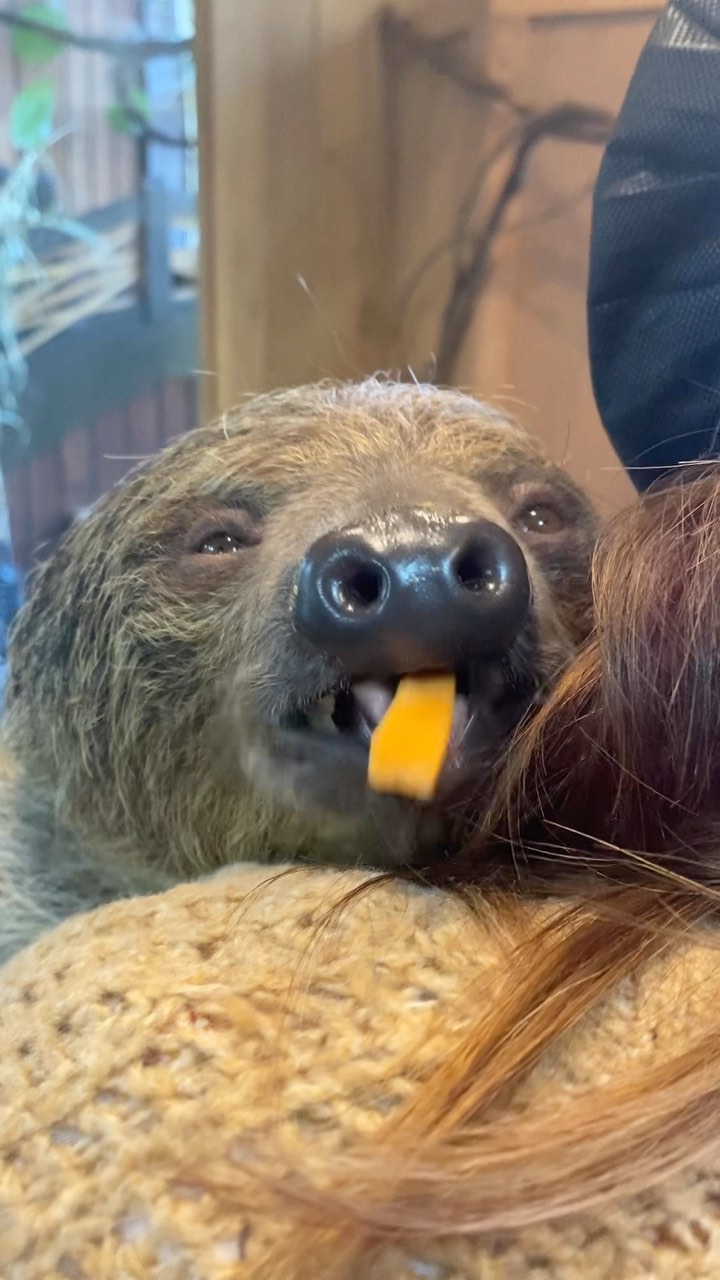Summary:
– Introduction to International Sloth Day and Grover, our Linne’s two-toed sloth munching on carrots.
– The unique characteristics of sloths: slow-moving nature, specialized limbs, and adapted diet.
– The importance of sloths in their natural ecosystems: seed dispersers and symbiotic relationships.
– Fun and interesting sloth facts: sleep patterns, fur algae, and camouflage.
– The efforts in conserving and protecting sloth populations: habitat preservation and raising awareness.
It’s International Sloth Day! And here at our zoo, we have the cutest Linne’s two-toed sloth, Grover, indulging in some tasty, crunchy carrots. Today, let’s dive into the fascinating world of sloths and discover what makes them so unique and interesting!
Sloths, often associated with slow movements, are the slowest mammals on Earth. Their leisurely pace results from their slow metabolism, allowing them to conserve precious energy. Sloths have adapted to arboreal life with their specialized limbs. Unlike most mammals, sloths have remarkably long arms and claws, enabling them to hang effortlessly from tree branches. They are so well-adapted to life in the treetops that they can even sleep while hanging upside down!
While we may think of sloths as lazy creatures, they have an important role in their natural ecosystems. Sloths are crucial seed dispersers, as their slow movement from tree to tree helps to spread seeds throughout the forest. They are essentially gardeners of the rainforest, contributing to the regeneration and diversity of plant life. Additionally, sloths have a symbiotic relationship with moths and algae. Algae often grows on sloths’ fur, providing camouflage and a food source for moths that live in their fur. Talk about a dynamic team!
Now, let’s delve into some fun and intriguing sloth facts that will captivate your interest. Did you know that sloths sleep up to 15 to 20 hours daily? Yes, you read that right! They spend most of their lives hanging high up in the trees, catching those well-deserved Z’s. They are true sleep champions of the animal kingdom!
Another fascinating aspect of sloths is their fur algae. Because sloths take it slow, their fur provides the perfect environment for algae to grow. The algae not only helps them blend into their surroundings but also provides valuable nutrients. It’s Mother Nature’s natural green smoothie for our wonderful sloth friends!
Sloths are masters of camouflage. Their fur, covered in algae and sometimes fungi, gives them a greenish tint that makes them almost invisible in the lush treetops. This incredible adaptation protects them from predators lurking below, such as jaguars and harpy eagles. So next time you walk through a rainforest, watch for these hidden treasures!
While sloths may seem like easy-going creatures, they face numerous challenges in the wild due to habitat loss, deforestation, and the illegal pet trade. That’s why conservation efforts are vital to protect these gentle giants. Organizations worldwide are working tirelessly to preserve sloth habitats, raise awareness, and combat illegal wildlife trafficking. Supporting initiatives focused on habitat preservation and education can help ensure a future where sloths thrive in their natural environment.
In conclusion, International Sloth Day celebrates the wonderful world of sloths and their unique qualities. Sloths are truly fascinating creatures, from their slow-paced lifestyle and peculiar limbs to their important roles in their ecosystems. The fun and intriguing facts about their sleep patterns, fur algae, and camouflage make them even more captivating. Let’s cherish and protect these incredible animals for generations to come. Happy International Sloth Day from Grover the Sloth and all of us at the zoo!
*****
Source Description
It’s International Sloth Day! Our Linne’s two-toed sloth Grover is munching on some crunchy carrots!🤍


